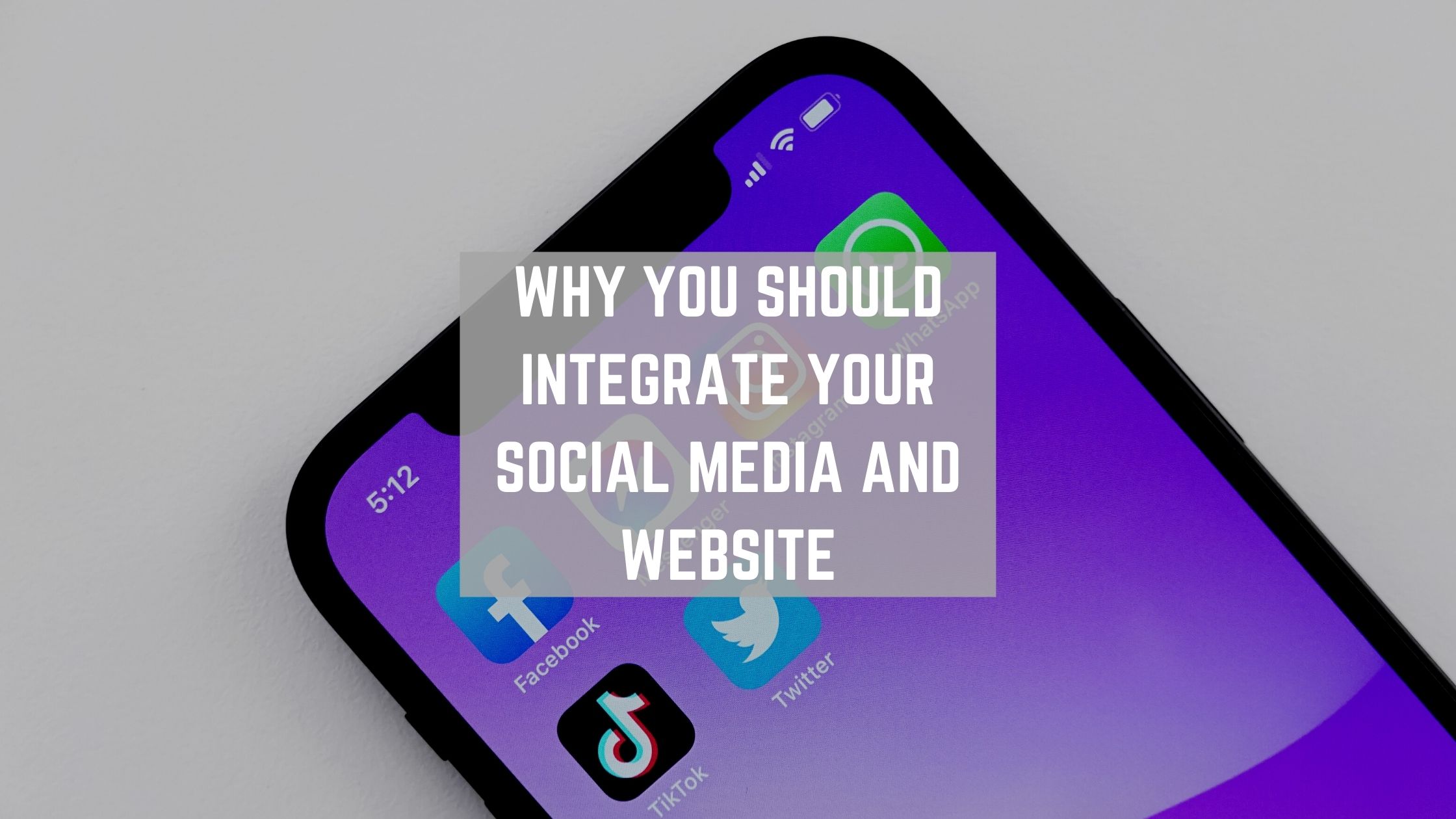The age of the internet and social media has drastically changed the landscape for business’ online presence. It’s practically essential that businesses use both social media and have a company website. One way to strengthen both is to integrate social media and your website. Social media integration builds brand image, reputability, interactivity of your site, and more.
Contents
What is Social Media Integration?
Social media integration means using your business’ social media accounts as a part of your marketing strategy. This can be done by directing your followers on social media to your site, or by having your social media accounts easily accessed on your business website. In simplest terms, it is incorporating your company’s social media into your website to promote your business across platforms. Promoting your social media on your site brings more social media followers while directing your followers to your business site creates more page traffic. It’s a win-win.

With the prevalence of social media these days, it’s almost impossible to avoid. By integrating it into your website, you use it to your advantage.
Why Social Media Integration is Important
There’s no doubt about it, social media can bring in a lot of traffic to your website. In fact, social media can drive about 31% of website traffic. Connecting your business website with your social media can turn website visitors into social media followers and vice versa. Did you know that it takes 5-7 interactions before a consumer remembers a brand? Given this statistic, integrating social media into your website is a simple way to connect with customers on their preferred platform.
A major goal of any business’ social media is getting page traffic and reaching potential customers, so conversions are a priority. Social media algorithms can often do the heavy lifting of finding your target audience. Using tools like SocialPilot can also inform you of the best time to post for your audience, increasing the likelihood of new leads. Incorporating social media into your site strengthens your brand, image, and increases visibility, furthering the potential for new leads. By using different platforms, you’re less likely to miss out on leads because different customers may have different preferred social media sites.
Social media is an important tool to stay in touch with customers and continue engagement. Particularly with COVID-19, the pandemic has changed the game of how businesses utilize social media. Linking your social media and your website casts a bigger net to bring users to your site.
How to Integrate Social Media With Your Site
Embedding Social Media

YouTube videos are great for SEO and brand promotion. Seattle Web Search uses this strategy on our own page.
One of the easiest ways to integrate social media into your website is by embedding social media feeds onto your page. Testimonial pages are a great way to do this. YouTube testimonial and reviews are especially great because of how impactful YouTube is for website SEO. YouTube content engagement is particularly powerful, so knowing how to use YouTube for your website can be beneficial for your business.
Having someone give a video review is great for brand reputability because of how much people value customer reviews. You can embed YouTube videos directly onto your page, so users don’t have to leave your page to find it.
Similarly, you can embed live social media feeds of your Twitter, Facebook, Instagram, or any other platform you choose directly onto your page. One strategy is to use a hashtag feed of customer posts. By reposting customer content that features your products you engage with users and simultaneously promote sales. Customer content can be great for promoting sales and brand image because users weigh customer reviews heavily when deciding whether to buy a product. Reposting customer content is also helpful in building relationships and creating a human connection.
Adding Your Social Feeds

The University of Washington is a great example of making one’s social media pages easy for users to access.
Another standard way to integrate social media to your website is by adding social media buttons to your page through site plug-ins. These are plug-ins you connect to your website that allow users to share content. They also show your social icons and are linked to your business’ social platforms. You don’t need to add every single social media platform, just the ones your business is active one! This is an unobtrusive but seamless way to connect the two.
Conclusion
Integrating your social media with your website is an effective way to strengthen both pages. You can easily increase traffic to your page by embedding your social media feeds into yours site. This makes it easy for users to connect with you across platforms. By doing this, you increase the potential for conversions and boost SEO in the process.


